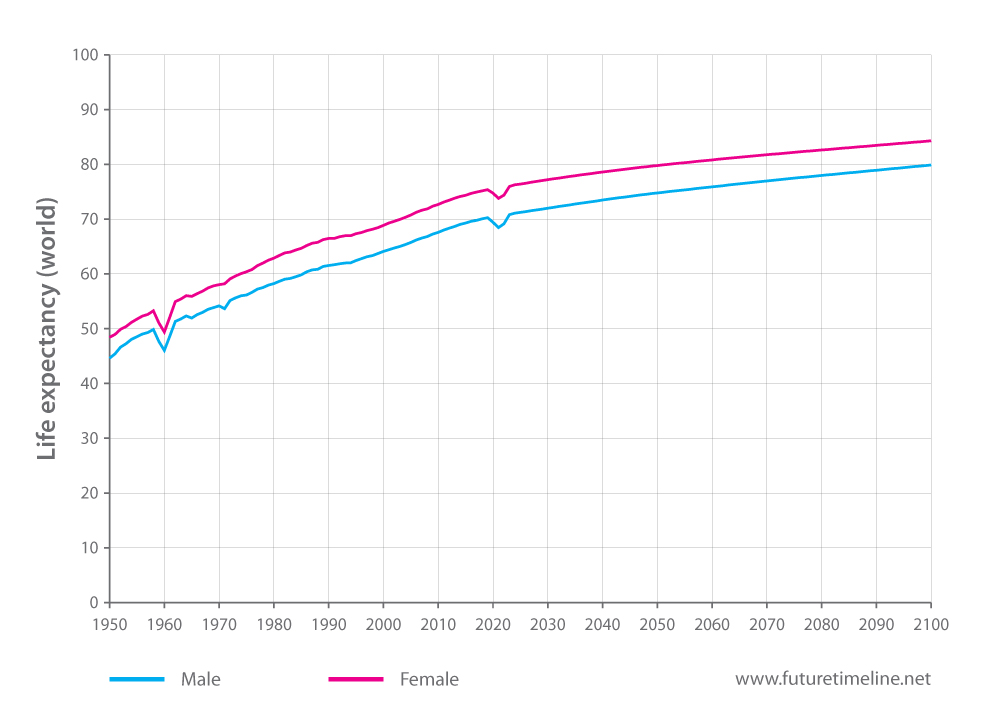
23rd June 2024 Cause of life expectancy gender gap revealed The gap in life expectancy between male and female organisms has been scientifically explained for the first time.
As seen in this graph of world life expectancy, women live about 7% longer than men. This fact isn't unique to humans, either; we see this trend in a wide range of other animals. Biologists have theorised that the discrepancy in life expectancy between sexes might be partly related to reproduction, but how? A team at Osaka University has discovered for the first time that germ cells – which develop into eggs in females and sperm in males – drive sex-dependent lifespan differences in vertebrate animals. Their work appears this month in Science Advances. The researchers examined the aging process in turquoise killifish, a small and fast-growing freshwater fish with a lifespan of only a few months. As in humans, female killifish live longer than males. But when the researchers removed the germ cells from these fish, they found that males and females had similar lifespans.
Cont = control group. GR = germ cell–removed. n = number of fish in group. Credit: Kota Abe, et al. Science Advances (2024).
"After removing the germ cells, male killifish lived longer than usual and female lifespans became shorter," explains lead author Kota Abe. "We wanted to understand how germ cells could affect males and females so differently. Our next step was to investigate the factors responsible." The team found that hormonal signalling was very different in females than in males. Female killifish without germ cells had significantly less oestrogen signalling, which can shorten lifespan by increasing cardiovascular disease risk. The females also had significantly more growth factor signalling (insulin-like growth factor 1). This made the females grow larger, while also suppressing signals within the body important for maintaining health and slowing aging. In contrast, male killifish without germ cells had improved muscle, skin, and bone health. Interestingly, these fish had increased amounts of a substance that activates vitamin D, as well as evidence of vitamin D signalling in their muscles and skin.
Vitamin D
Vitamin D can also be considered a hormone. Although well known for keeping bones strong and healthy, it also seems to have wider positive effects throughout the body. The team's results pointed to the possibility that vitamin D can improve longevity, leading them to test whether a vitamin D supplement could increase the lifespan of the fish. "When we administered active vitamin D, we found that the lifespans of both males and females were significantly extended, suggesting that vitamin D signalling provides health benefits throughout the body," explains senior author Tohru Ishitani. "Our work suggests that vitamin D signalling could influence the longevity of other vertebrates, including humans." The discovery that germ cells affect male and female longevity in opposing ways is an important clue in unravelling the mysterious interactions between reproduction, aging, and lifespan. It's unclear exactly how vitamin D fits into this puzzle, but it could be part of future strategies to extend healthy lifespans.
Comments »
If you enjoyed this article, please consider sharing it:
|
||||||








